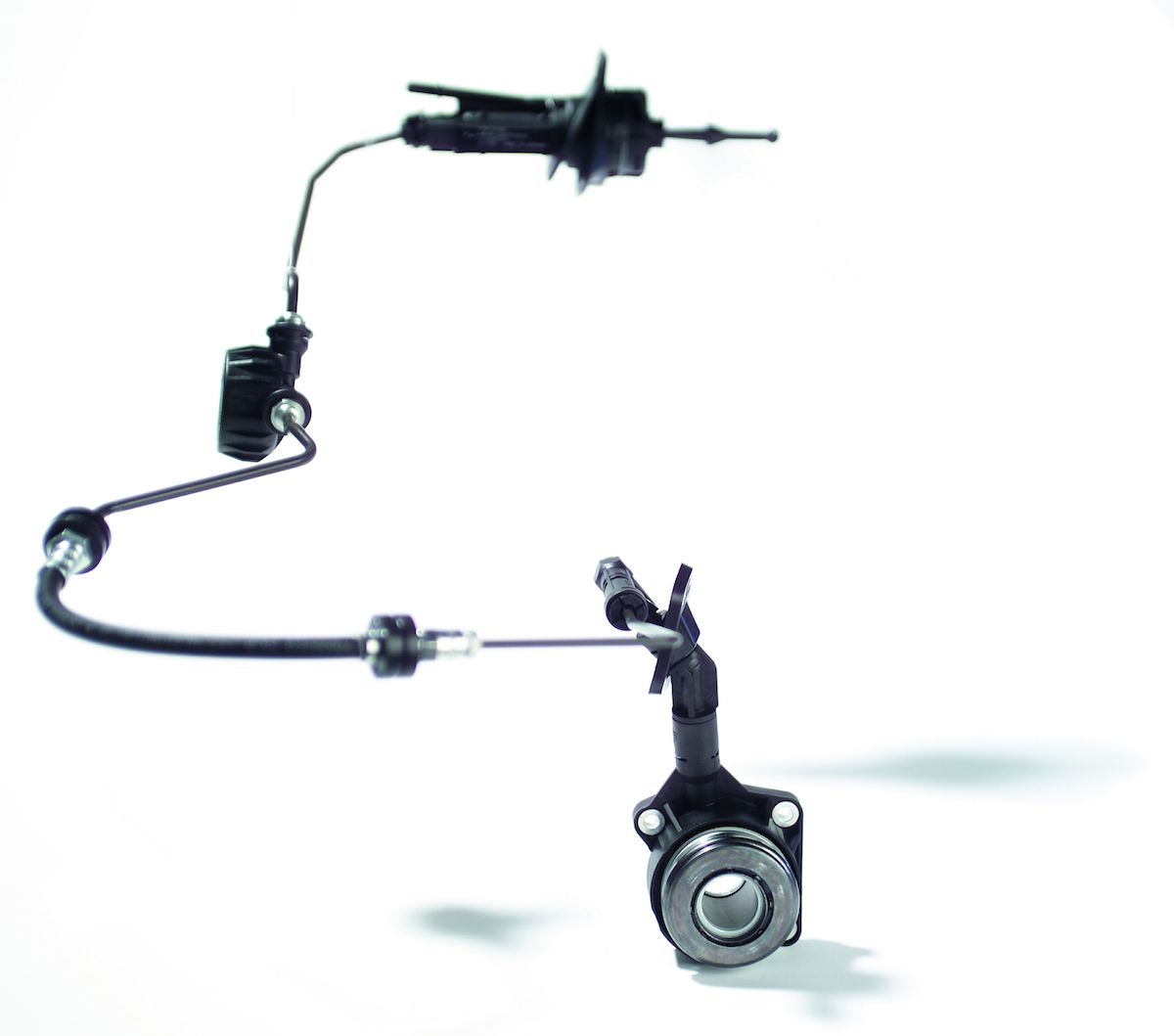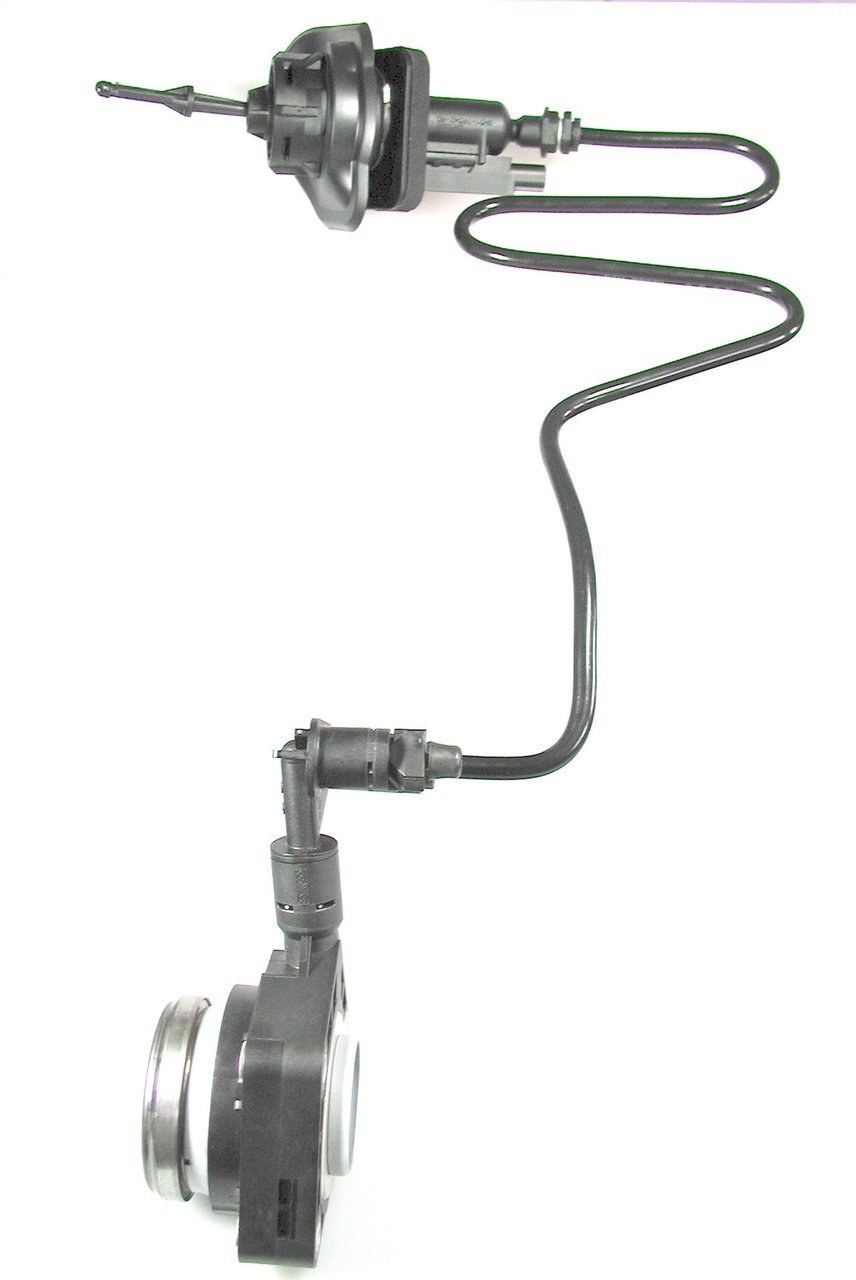Hydraulic clutch actuator
The clutch actuator is part of the overall clutch system and can operate either mechanically or hydraulically.
Function
The clutch actuator is part of the overall clutch system and can operate either mechanically or hydraulically.
With a clutch actuation system, the driver controls the interruption of power transmission  by pressing the pedal. The force exerted is transmitted by several components and passed on to the actual clutch system. The process takes place in reverse on releasing the pedal. With a hydraulic clutch actuation system, so-called "Peak Torque Limiters (PTL)" prevent the occurrence of torque peaks and excessively rapid clutch engagement. A frequency modulator ensures that the vibration caused by the crankshaft does not affect the pedal.
by pressing the pedal. The force exerted is transmitted by several components and passed on to the actual clutch system. The process takes place in reverse on releasing the pedal. With a hydraulic clutch actuation system, so-called "Peak Torque Limiters (PTL)" prevent the occurrence of torque peaks and excessively rapid clutch engagement. A frequency modulator ensures that the vibration caused by the crankshaft does not affect the pedal.
Design of hydraulic clutch actuator
A hydraulic clutch actuation system consists of the following components:
- Pedal
- Clutch master cylinder
- Clutch pipe
- Clutch slave cylinder or CSC
Clutch master cylinder
In addition to their basic function, modern clutch master cylinders have to be designed for a variety of extra tasks. The following functions must be implemented to enhance safety, comfort and response:
- Cruise control system
- Starting lock
- Electric parking brake
- Torque adjustment
- Automatic stop-start
These extra tasks have to be reconciled with the demand for a further reduction in both the space required and the weight involved whilst guaranteeing quick and easy installation.
The clutch master cylinder is directly linked to the pedal. The piston inside it moves when force is applied to the pedal. The piston translates the force exerted by the driver into a mechanical command and passes it on to the clutch slave cylinder or CSC by way of the clutch pipe.
Clutch pipe
The clutch pipe links the pedal and the gearbox and so may also possibly transmit vibration. Such interference must be eliminated in order to give the driver a reliable feeling for the correct pressure point and to ensure comfortable operation of the pedal.
The clutch pipe is filled with hydraulic fluid. It conveys the pedal pressure exerted by the driver and absorbed by the clutch master cylinder to a clutch slave cylinder or a CSC. These components react to increasing pressure by disengaging the clutch and decreasing pressure by engaging the clutch.
Clutch slave cylinder
Inevitable clutch wear must never affect reliable operation of the CSC or clutch slave cylinder and compensation therefore has to be provided. The clutch slave cylinder must be of compact lightweight design whilst at the same time ensuring top performance and efficiency.
The clutch slave cylinder absorbs the pressure from the clutch pipe and transmits it to the release lever. This is implemented by the hydraulic fluid moving a piston forwards or backwards. The clutch is disengaged or engaged depending on the direction of motion.
CSC
The CSC performs the same task as the clutch slave cylinder by directly transmitting force to the diaphragm spring tongues of the clutch.
Safety
Proper operation of the clutch actuation system is absolutely essential to be able to drive a vehicle with manual gearbox. Total reliability and a long service life must therefore be guaranteed. From the point of view of the driver, a reliable feeling for the correct pressure point is crucial. The important factors for car manufacturers and their suppliers are a slim design, quick and easy installation and the increasing use of resource-preserving and recyclable materials.






